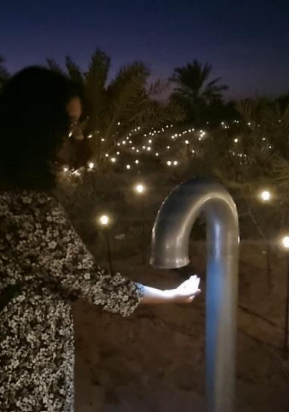This article provided a fascinating exploration of the evolution of computer vision technology and its integration into the realm of artistic expression. Among the showcased artworks, “Standards and Double Standards” by Rafael Lozano-Hemmer particularly intrigued me due to its metaphorical approach to incorporating computer vision. What captivates me about this piece is its ability to evoke complex narratives and reflections on societal dynamics through a seemingly simple and tangible interaction. The choice of belts and their rotation adds a layer of symbolism, raising questions about control, authority, and the implications of automated surveillance.
This artwork also reminded me of an immersive installation I experienced on Lulu Island in January, “Pulse Island” by the same artist. It featured stations with PPG pulse sensors that detected the participant’s heart rate, surrounded by an array of over 4,000 Edison lightbulbs. Consequently, the lightbulbs around that area glimmer to the rhythm of the heartbeat as the speakers echo the heartbeat. As people add a new recording of their heartbeat, the oldest recording in the group is replaced, creating a Memento Mori. By capturing and recording this physiological data, it felt like the artwork was engaging in a subtle form of surveillance of the participants’ vital signs.
It is also important to look at the ethical considerations surrounding the use of computer vision. I was recently invited to an event with industry experts where we discussed ethical considerations of AI and it prompted me to reflect on the following. One primary ethical concern highlighted is the potential misuse or unintended consequences of technology originally designed for creative and benign purposes. The shift from artistic experimentation to potential mass surveillance raises questions about the responsibility of creators and the broader ethical framework within which these technologies operate. Another controversial issue in computer vision is bias and fairness. Surveillance Algorithms can exhibit biases based on the data they are trained on. This bias can lead to discriminatory outcomes, influencing areas such as hiring, law enforcement, and financial services. Moreover, there are several privacy concerns associated with surveillance technologies. The integration of computer vision in art installations blurs the boundaries between observation and intrusion. For example, I wasn’t aware that our heart rates were being stored in a database for a while before I participated in the installation.

